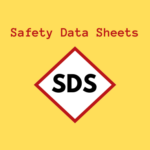Customer Feedback: A Vital Component in the ISO Certification Process

Achieving ISO certification is a significant milestone for any organization, signifying adherence to international standards of quality, safety, and efficiency. Among the various elements that contribute to this achievement, customer feedback stands out as a vital component. Collecting and analyzing customer feedback not only helps in meeting ISO standards but also promotes continuous improvement and customer satisfaction. Here’s a detailed look at why customer feedback is necessary in the ISO certification process.
Understanding ISO Certification
ISO (International Organization for Standardization) certification encompasses a range of standards designed to ensure that products, services, and systems meet quality and efficiency benchmarks. Commonly sought certifications include ISO 9001 for Quality Management Systems, ISO 14001 for Environmental Management Systems, and ISO 27001 for Information Security Management Systems. These standards require organizations to demonstrate their commitment to continual improvement and customer satisfaction.
The Role of Customer Feedback
- Identifying Improvement Areas
Customer feedback provides direct insight into the experiences and perceptions of the end-users of a product or service. This feedback is crucial for identifying areas where your organization can improve. For instance, recurring complaints about a particular product feature can highlight a design flaw that needs attention. Addressing such issues not only improves the product but also aligns your organization with ISO’s emphasis on continuous improvement. - Enhancing Customer Satisfaction
One of the core principles of ISO standards is enhancing customer satisfaction. By actively seeking and responding to customer feedback, your organization can better understand customer needs and expectations. This understanding helps in refining processes and products to meet or exceed customer expectations, thereby boosting satisfaction and loyalty. - Driving Process Improvement
ISO certification requires organizations to establish a systematic approach to managing processes. Customer feedback serves as a valuable input in this context. It can reveal inefficiencies and gaps in processes that might not be apparent from internal assessments. For example, feedback about slow response times in customer service can lead to a reevaluation and optimization of your support process. - Supporting Objective Evidence
ISO audits and assessments demand objective evidence of compliance with standards. Customer feedback provides tangible proof of your organization’s commitment to quality and continuous improvement. Positive feedback can serve as testimonials of your organization’s strengths, while negative feedback, along with documented corrective actions, can demonstrate your organization’s proactive approach to addressing issues.
Implementing a Robust Feedback System
To effectively leverage customer feedback in the ISO certification process, organizations need a structured approach to collecting, analyzing, and acting on feedback. Here are some steps to establish a robust feedback system:
- Regular Collection
Implement regular feedback collection mechanisms such as surveys, feedback forms, and direct interviews. Digital tools like email surveys and online review platforms can facilitate ongoing feedback collection. - Systematic Analysis
Use analytical tools to analyze feedback systematically. Categorize feedback into themes, identify recurring issues, and track trends over time. This analysis helps in prioritizing areas for improvement. - Responsive Action
Develop a responsive action plan to address feedback. This plan should include identifying root causes, implementing corrective actions, and communicating changes to customers. Demonstrating responsiveness to feedback can enhance customer trust and satisfaction. - Continuous Monitoring
Establish a continuous monitoring system to track the impact of implemented changes. Regularly review feedback to ensure that improvements are yielding the desired outcomes and to identify new areas for enhancement.
Leveraging Trackmedium QMS for Feedback Management
To streamline the feedback management process, organizations can utilize specialized tools like Trackmedium QMS. Trackmedium QMS offers comprehensive modules for handling customer feedback and surveys, which are essential for achieving and maintaining ISO certification.
A. Customer Communication Module
Trackmedium’s Customer Communication Module allows your organization to systematically collect, manage, and analyze customer feedback. The module provides a centralized platform where all feedback, complaints, and inquiries can be logged, categorized, and tracked. This ensures that no feedback is overlooked and that every piece of information is utilized to drive improvement.
B. Surveys Module
The Surveys Module in Trackmedium enables your organization to design and deploy custom surveys to gather detailed insights from customers. This module supports various survey types and distribution methods, making it easier to reach a broad customer base and obtain comprehensive feedback.
By integrating these modules into their quality management processes, your organization efficiently captures and responds to customer feedback, ensuring continuous alignment with ISO standards.
Conclusion
Incorporating customer feedback into the ISO certification process is not just a requirement but a strategic advantage. It ensures that your organization remains attuned to customer needs, drives continuous improvement, and maintains a competitive edge. By valuing and acting on customer feedback, and leveraging tools like Trackmedium QMS, your organization can achieve and sustain ISO certification, ultimately fostering a culture of quality and excellence.


















